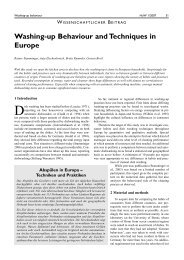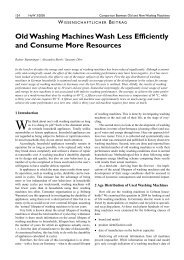Development of a novel mechatronic system for mechanical weed ...
Development of a novel mechatronic system for mechanical weed ...
Development of a novel mechatronic system for mechanical weed ...
You also want an ePaper? Increase the reach of your titles
YUMPU automatically turns print PDFs into web optimized ePapers that Google loves.
Summary<br />
For broad usage <strong>of</strong> the <strong>system</strong>, parameter adjustments need to be replaced by<br />
a more <strong>system</strong>atic method.<br />
The second part <strong>of</strong> the work deals with the development <strong>of</strong> a virtual prototype <strong>of</strong><br />
a <strong>system</strong> <strong>for</strong> intra-row <strong>weed</strong>ing, emulating the manual hoeing motions under the<br />
soil surface. The hoeing tool consists <strong>of</strong> an arm holder and three or more<br />
integrated arms rotating around the horizontal axis above the crop row. The<br />
hoeing tool is attached to the motor shaft and the working height <strong>of</strong> the whole<br />
assembly is adjustable in order to provide optimal hoeing depth, which should<br />
be between 20 and 30 mm. There is a possibility to change the arms’ length<br />
and their angular position in relation to the surface perpendicular to the rotation<br />
axis in which the arm holder is placed. Depending on the duckfoot knives’<br />
shape and size the necessary number <strong>of</strong> cuts between two plants could be set,<br />
controlling the rotational speed <strong>of</strong> the hoe.<br />
The virtual prototype <strong>of</strong> the hoe was designed in Pro/engineer®. Kinematical<br />
behaviour <strong>of</strong> the developed prototype in different hoeing strategies was<br />
simulated and tested. The hoeing trajectories <strong>of</strong> the design variants consisting<br />
<strong>of</strong> 3, 4 or 9 arms were simulated in hoeing strategies with 2 and 3 cuts between<br />
every two plants. The optimal length <strong>of</strong> the arms was estimated and the hoeing<br />
depth/width ratio was discussed according to the roughness <strong>of</strong> the soil surface.<br />
The influence <strong>of</strong> the arms’ angular adjustment to the hoeing trajectories was<br />
examined <strong>for</strong> different arm lengths and selection <strong>of</strong> the appropriate design<br />
variant according to the hoeing strategy was discussed. The aim <strong>of</strong> the<br />
comprehensive analysis <strong>of</strong> the <strong>weed</strong>ing tool’s kinematical behaviour was to<br />
verify that the newly designed hoeing <strong>system</strong> can be adapted to different intra-<br />
row distances and growth stages <strong>of</strong> the crop plants.<br />
Most <strong>of</strong> the kinematical problems were discovered and worked out in the virtual<br />
prototyping process, providing easier development <strong>of</strong> the physical prototype<br />
with very few errors. Finally, one <strong>of</strong> the major benefits <strong>of</strong> virtual prototyping was<br />
reduction <strong>of</strong> the costs and time needed <strong>for</strong> development <strong>of</strong> the physical<br />
prototype.<br />
122





